Golden Shiner Culture
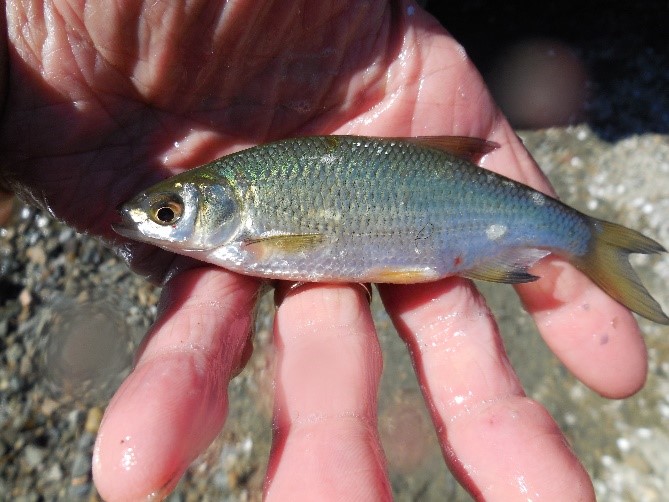
Starting in 2013, Golden Shiner production increased significantly when the Round Valley Trout Association (RVTA) approached Fish and Wildlife with interest in a pilot project of raising Golden Shiners to augment the struggling Alewife forage base in Round Valley Reservoir. RVTA purchased 500,000 Golden Shiner fry from a bait supplier in Arkansas and had them shipped to the hatchery. The hatchery has dedicated two ponds to their culture rearing them to 2 – 3 inches during the summer in preparation for an early fall stocking.
Beginning in 2019, hatchery staff stocked each of the three advanced fingerling Walleye ponds with one box or 250,000 shiner fry prior to their setup at 1.8 inches. This became necessary as cool spring water temperatures held back Fathead Minnow spawning and their fry were not ready to be used as forage early enough for the Walleye fingerlings.
The hatchery has increased 2 – 3 inch shiner production and Regional Fisheries Biologists are requesting them for pond and lake restockings more often. Over 300,000 were stocked in 2019 in eleven different lakes as a supplemental forage base.
Similar to other cool and warm water species the culture ponds are fertilized with pulverized Alfalfa meal before the fry are stocked and a zooplankton bloom is created and maintained for the first 30 days. Once the fry reach an inch in length, small amounts of mash/smaller pelleted feeds are dispersed in several locations around the ponds daily.
Round Valley Reservoir – Golden Shiner Stocking (2013-2024)
| Year | # Fish | Pounds |
|---|---|---|
| 2013 | 332,545 | 966 |
| 2014 | 113,999 | 856 |
| 2015 | 295,238 | 1,669 |
| 2016 | 100,758 | 896 |
| 2017 | 653,634 | 1,913 |
| 2018 | 229,149 | 1,295 |
| 2019 | 1,203,042 | 1,192 |
| 2020 | 301,907 | 767 |
| 2021 | 311,224 | 321 |
| 2023 | 461,408 | 673 |
| 2024 | 408,885 | 381 |
| Totals | 4,411,789 | 10,929 |
Fathead Minnow Culture
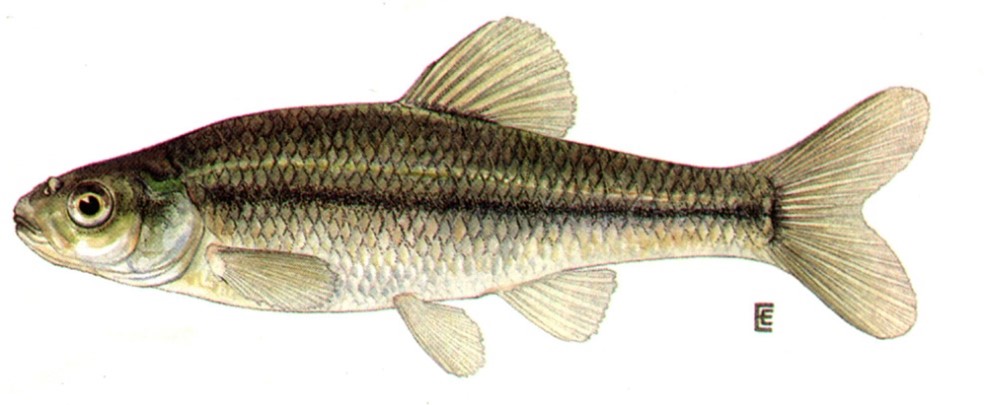
Fathead Minnows are used three different ways at the hatchery: The NJ State Mosquito Commission uses them for mosquito larvae control (as described in the following section), pond restockings, and as forage fish for species that are grown to extended size at the hatchery. In April, the hatchery purchases 500 pounds of pond grown Fathead Minnows from a certified dealer in Arkansas. They are split into two 4-5-acre ponds, The ponds are fertilized weekly with alfalfa meal and fed daily with a fine mash fish food. By mid-June the adults have spawned, and fry become available to seine as forage fish. From June 15 – July 15, the two ponds are netted weekly, and the fry/small fingerlings are fed to three growout Walleye ponds as forage. During that period approximately 40,000 Walleye will grow from 1.8 – 4-inches consuming about 2,000 pounds of minnows. For the remainder of the summer the minnow fry will be fed to Largemouth and Smallmouth Bass fingerlings to grow them from 1.5-inches to between 3 – 4-inches. In early fall, the Fatheads will be used to restock ponds throughout the state that have been refilled after dredgings and dam repairs. This helps establish a forage base for bass and sunfish that have also been restocked. In late fall, the minnow ponds are drained and harvested and the fish are brought into the Intensive Culture Building to be used as forage for Muskellunge fingerlings over the winter.
Mosquito Eating Fish Culture (Fathead Minnows, Gambusia, and Bluegill)
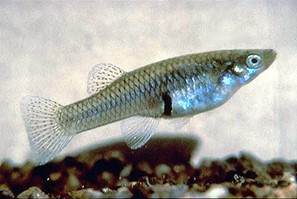
In addition to fish reared for distribution into lakes and streams for recreational and environmental purposes, the Hackettstown Hatchery also rears fish to meet the State’s mosquito control needs. Working under an agreement with the State Mosquito Control Commission and NJDEP Fish & Wildlife, the Commission coordinates mosquito control measures through the state’s 21 county-based mosquito control groups.
The demand for mosquito eating fish has changed dramatically over the years. The emergence of the Zika Virus, West Nile Virus, Eastern Equine Encephalitis, and the presence of the Asian Tiger Mosquito keeps mosquitos and their control on the forefront. As a result, requests have been the highest since the program’s inception in 1991. One species, Mosquitofish, is commonly referred to by its scientific name Gambusia. However, the program has made a changeover from mostly nonnative Gambusia to almost strictly Fathead Minnows. This is a direct result of Gambusia being found in increasing fisheries surveys throughout the state and a coordinated plan between the State Mosquito Control Program and Fish and Wildlife to eliminate their use.
The Hackettstown Hatchery provides fish that were either overwintered at the hatchery or purchased from bait dealers in Arkansas. Counties obtain permission from the State Mosquito Control Commission and once approved, representatives pick up the approved number of fish for stocking within their county. Gambusia are to be stocked only in waters that do not have any resident fish populations, such as water troughs or fountains. Fathead Minnows can be used in most waters as they are a common species found in most New Jersey waters. In 2021 and 2022, the State Mosquito Commission requested Bluegill fingerlings to use as control species in waters that do not dry down in the summer and fall. The hatchery provided 5,000 in both years.
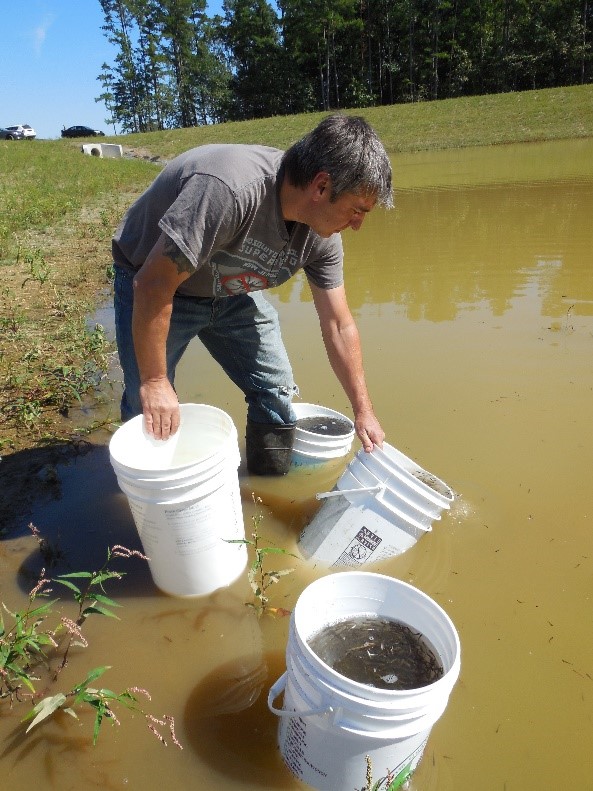
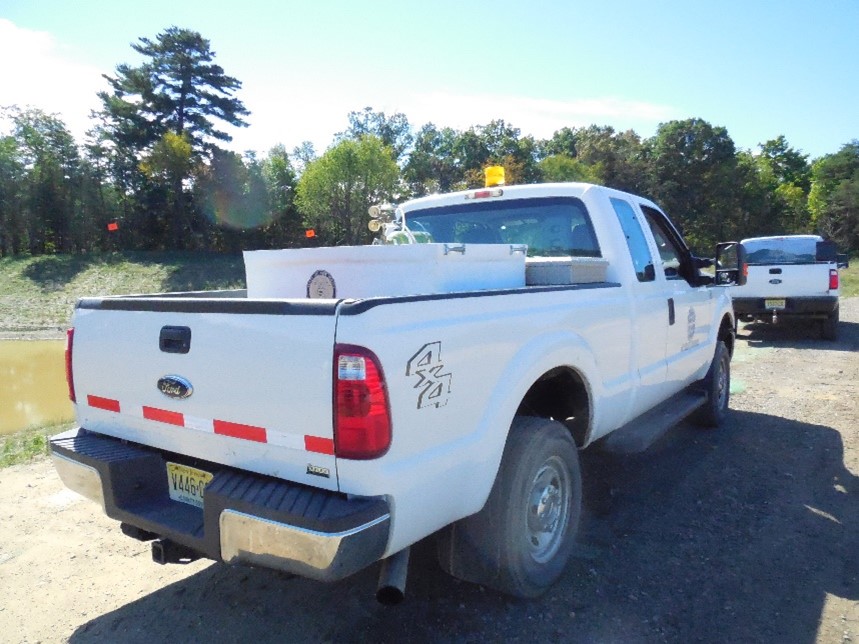
The Distribution Process – County representatives arrive with a pickup truck. Hatchery staff load a 200-gallon portable distribution tank equipped with an oxygen bottle into their truck. It is strapped in for safety during transport.
Staff then fill the tank with the correct water temperature for the time of year. Fish are subsequently weighed and inventoried. The county representatives then disperse fish in appropriate areas within their counties.
Mosquitofish Distribution by the Hackettstown Hatchery 1991-2024
| Year | # Gambusia | # Fatheads | Totals |
|---|---|---|---|
| 1991 | 15,000 | ||
| 1992 | 31,715 | ||
| 1993 | 61,405 | ||
| 1994 | 107,500 | ||
| 1995 | 155,680 | ||
| 1996 | 146,210 | ||
| 1997 | 78,300 | ||
| 1998 | 148,006 | ||
| 1999 | 117,985 | ||
| 2000 | 294,430 | ||
| 2001 | 399,905 | ||
| 2002 | 434,531 | ||
| 2003 | 236,733 | ||
| 2004 | 197,705 | ||
| 2005 | 86,440 | 30,660 | 117,100 |
| 2006 | 117,150 | 52,150 | 169,300 |
| 2007 | 17,350 | 114,100 | 131,450 |
| 2008 | 38,380 | 58,503 | 96,883 |
| 2009 | 202,458 | 194,846 | 397,304 |
| 2010 | 94,135 | 37,250 | 131,385 |
| 2011 | 80,440 | 29,200 | 109,640 |
| 2012 | 75,840 | 41,223 | 117,063 |
| 2013 | 121,200 | 67,500 | 188,700 |
| 2014 | 167,159 | 96,334 | 263,493 |
| 2015 | 120,269 | 137,979 | 258,248 |
| 2016 | 219,075 | 464,800 | 683,875 |
| 2017 | 88,663 | 450,404 | 539,067 |
| 2018 | 10,000 | 446,565 | 456,565 |
| 2019 | 26,554 | 401,703 | 428,257 |
| 2020 | 0 | 141,500 | 141,500 |
| 2021 | 40,120 | 163,513 | 203,633 |
| 2023 | 34,689 | 207,010 | 241,699 |
| 2024 | 56,144 | 437,279 | 493,423 |
| Totals | 4,021,171 | 3,572519 | 7,593,690 |
 Official Site of The State of New Jersey
Official Site of The State of New Jersey
